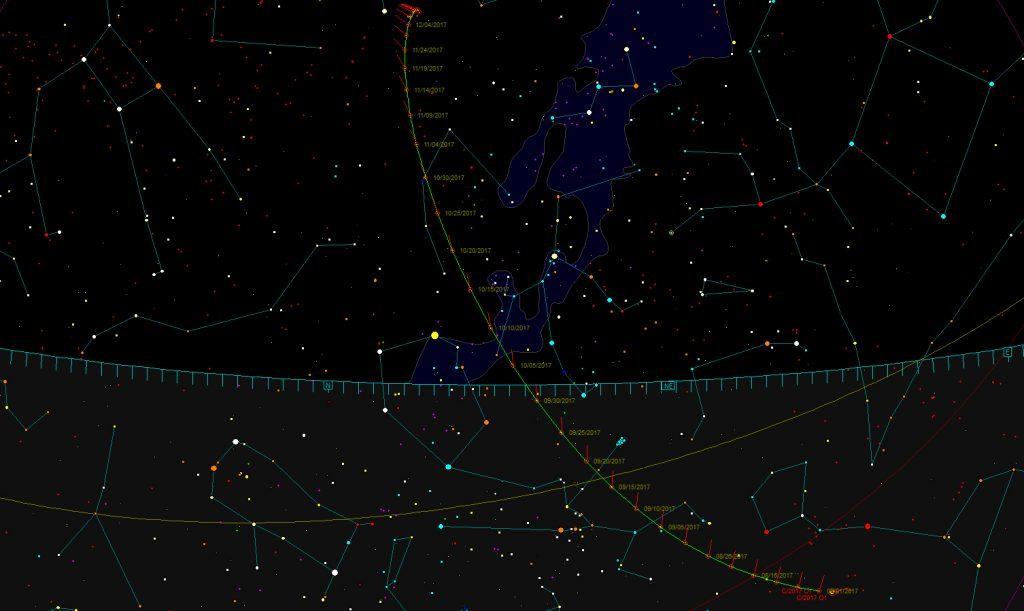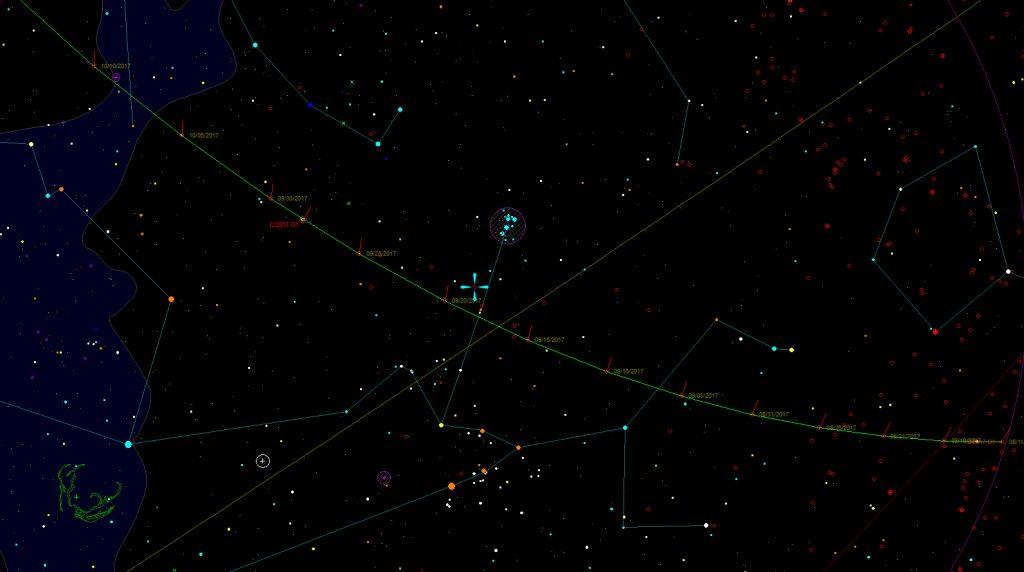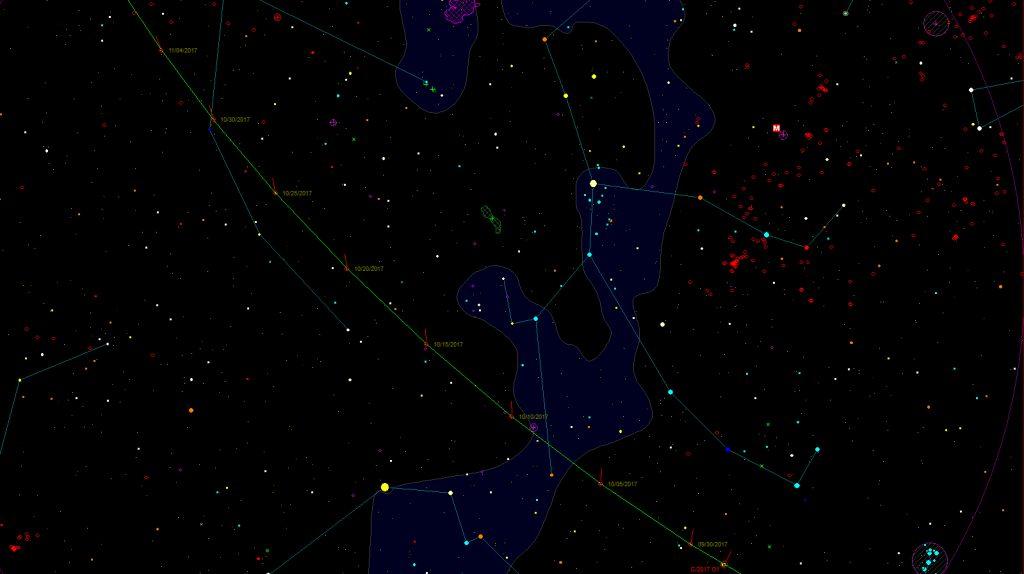Comet C/2017 O1 – ASAS-SN appears to have brightened rapidly from under +15th magnitude to around +8th magnitude. This newly discovered comet is currently in Cetus, so at the moment is too low for us to see it from the northern hemisphere, but it is moving northwards. Comet C/2017 O1 was discovered by the automated supernova sky survey ASAS-SN. Its name seems to have caused quite a bit of controversy (Why?).
As the comet moves north over the next few months, the comet was expected to be reasonably bright, and should give us a good show later in the year, potentially reaching magnitude +8 at the beginning of October. If this current outburst is anything to go by, could it be a lot brighter? Let’s keep our fingers crossed.
But, don’t forget; It’s a comet! Their performance is so unpredictable.
How to find the comet over the coming months.
The first map below shows the path of the comet from where it is currently in Cetus, moving through Taurus (when it passes between the Hyades and Pleiades star clusters around mid September), then onto Perseus and Camelopardalis. It reaches perihelion at 0.722 Astronomical Units from the Sun on the 14th of October.
It will be its closest to Earth four days later at 1.5 Astronomical Units on the 18th of October.
At the end of the year the comet starts looping round in a retrograde motion close to Polaris.
The other two maps below show a closer view. Click on the maps for a bigger version.



will we get the chance to spot it in Belize?
You are a lot further south from the UK, so have a better chance of catching it if you have suitable equipment to pick up this faint object.